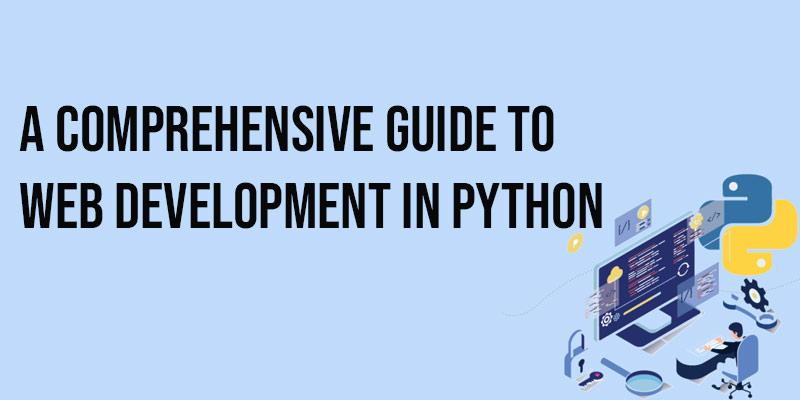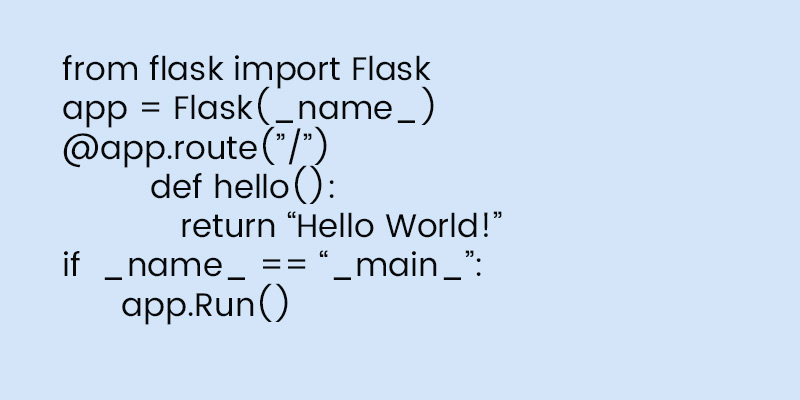
Python has become the best programming language among developers and programmers in the past few years. Due to this, Python exploded in popularity. Among various programming languages like Java and javascript, Python is used for multiple development and industries. Since its development, Python has been utilized in machine learning, web development, game development, data analysis, data science, and other development fields because of its compatibility, libraries, tools, syntax and portability.
If you intend to become a python developer, you can join Python Training in Chennai and learn the core concepts of python such as python web development processes, python technologies, List, Ranges & Tuples in Python and Python Dictionaries and Sets.
This proves that Python is the best programming language, and it is the right time to become a python developer. Every top company hires a person proficient in any coding language; if it is Python, you will be given the first preference.
In this blog, we shall discuss why python web development is crucial and the importance of python web development.
What is web development?
If you are a novice in programming, you need to understand web development. Though it is complex to explain the exact meaning, web development's core is building, developing, and maintaining websites. Significantly, web development prominently involves both the front end and back end.
The front end development involves how we interact with the clients, whereas back-end development includes coding and interacting with a database.
Applications for Python
Now, we shall discuss why python for web applications and python web development process in detail.
What makes Python web development more suitable?
Advantages of python for web applications
Easy to learn
For many beginners, Python is the best coding language because of its easy syntax.
Compared to some other languages like Java or C++, Python language reliance on common expressions and whitespace significantly reduces the amount of code you need to write. In addition, it has a lesser entry barrier because you can understand the code easily. After all, it is relatively more similar to your everyday language.
If you are interested in learning Java, you can join Java Training in Chennai and learn the new technologies of java such as tools,libraries, frameworks, Array, Threads, and Exception handling.
Rich ecosystem and libraries
Python provides a wide variety of library tools and packages, allowing you to access many pre-written codes and speeding up the time it takes to develop applications.
For example, you can use Numpy and Pandas to analyze data mathematically, Pygal to create charts, and SLQALchemy to build composable queries.
Python also has some incredible web frameworks, like Django and Flask, which support and offer developers a way to increase their programming productivity.
Fast prototyping
Python allows you to create projects much more quickly than other programming languages, which makes it easier for you to get feedback and make iterations. Python is highly advantageous for startups because they can quickly enter the market and gain a competitive advantage.
Wide-spread popularity
Python is the best programming language in the world, which is widely used for various developemnt and it has communities all over the place. Due to its popularity, Python is frequently updated with new features and libraries. It also offers top-notch documentation and community support. Python, particularly for new developers, offers a robust framework and provides support as a preliminary step for a developer's career.
To have an in-depth understanding of the Python language, you can take the Python Online Course, which will help you have a profound understanding of Install Python and Environment Setup, using Ranges, Python Dictionaries and Common Web Application Tools
Python web frameworks
What are web frameworks, and why are they important?
Consider a toolbox. A web framework is a group of packages and modules composed of pre-written, standardized code that allows you to build web applications, enabling development while improving your programmes' scalability and dependability. In other words, frameworks have included features that "set up" your project, reducing the tedious work you must do.
Python web development frameworks are only used in the back-end for server-side technology, which helps with URL routing, HTTP requests and responses, accessing databases, and web security. A web framework is used without being required, but it is highly advised because it makes it possible to create complex applications much faster.
What are some popular Python web frameworks?
For the long term, Django and Flask are the most widely used Python web development frameworks.
Django
Django is a high-level, free-to-use Python web framework that "motivates fast development and clear, practical design." It is scalable, safe, and rapid. As Django offers extensive community support and required documentation, working with the MVPs for larger businesses is also flexible. Django is used by many of the largest companies, including Spotify, Dropbox, Instagram, and Pinterest.
Flask is regarded as a micro-framework or a simple web framework. It lacks many "batteries-included" features and capabilities that full-stack frameworks like Django provide, including a web layout engine, login authorization, and verification.
Because Flask is portable and minimalistic, you can add the libraries and extensions you need as you code rather than waiting for the framework to do so.
To give you control and flexibility, Flask provides the elements you need to build an app. Large organizations like Netflix, Linkedin, and Uber utilize this popular and effective Flask web framework.
Moreover, you will have other notable frameworks, such as:
-
Pyramid
-
Web2Py
-
Turbogears
Which should you use?
What framework, then, should I pick? It depends on the project that you intend to take on.
Think about your level of web development knowledge and experience. Consider creating your programme with something more "barebones" if you have a lot of experience.
However, if you are a novice developer, it might be preferable to use a framework like Django that offers more support.
Additionally, recognize whether you would choose to have the freedom to construct the framework of your codebase or a "foundation" codebase to build on. End up choosing Django if you prefer the first option; choose Flask if you would like the second option.
They can accomplish the same functionality, so getting started coding is more than bothering about which framework is superior.
Python libraries for web development
Remember the following Python libraries when developing websites:
-
Scrapy is a good choice if you ever need to retrieve data from the web for your application.
-
It is a commonly used library for various tasks, including automated testing, data mining, and scraping.
-
For creating serverless computing on Amazon Web Services Lambda, Zappa is an effective library.
-
With the help of the library Requests, you can quickly send HTTP requests to interact with applications to retrieve data or HTML pages.
Dash is another helpful library that supports those creating web applications for data visualization. It offers features like maps, charts, dashboards, and more built on top of Flask.
A Roadmap for Web Development with Python
Step 1: Learn HTML + CSS
Learning hypertext markup language and Cascading Style Sheets is crucial before beginning your career as a web developer. These two skills are essential for web development because they help build web design blocks.
If you are interested in becoming a web designer, you can join Web Designing Course Online and learn the HTML, Manage the Texts in the HTML, HTML Styles, HTML Tables and Handling Images.
To begin your web development path, you should start learning how to design responsive static pages. Moreover, it would be best if you knew about topics like the internet, HyperText Transfer Protocol, browsers, Domain Name Systems, hosting, and more might also be beneficial.
It is not required, but you can learn CSS frameworks like Bootstrap, which significantly accelerate your development.
Step 2: Learn the Javascript programming language
The best thing to do after that is to study basic Javascript.
The fundamentals of programming, such as:
-
Data types
-
Variables
-
General conventions
-
String manipulation
-
Arithmetic and operators
-
Control statements
-
Loops, etc.
So, applying Javascript to client-side code will be simpler for you if you understand the fundamentals of the language.
Join Java Training in Bangalore and learn Core Java Programming, Data Types, Operators, Variables, Methods, Object, Constructors and many others.
Step 3: Document Object Model & jQuery
After mastering javascript fundamentals, you should learn how to work with DOM and jQuery, a javascript library that facilitates DOM manipulation. You now understand how to make dynamic pages.
Front-end Framework
Though this skill is optional, having this knowledge will help you work efficiently. Learning a front-end framework like React is recommended but optional to create a useful full-stack web application. In addition to aiding in creating beautiful SPAs, it is frequently necessary to be hired as a front-end or full-stack developer.
To become a full- stack developer, you can join Full Stack Developer Course in Chennai, which will help you understand the front-end and back-end technologies and impart you with programming language skills.
Step 4: Python
Onto the back end now. Like with Javascript, you should go over the fundamentals of Python before learning about DOM manipulation. Learning the basics will prepare you for Django so you can easily dive in quickly. However, learning the basics of Python shouldn't be too challenging because many of the concepts are comparable to those of Javascript.
Step 5: Learn Django + Database
Setting up your back-end environment and creating the business logic are both possible with Django. Additionally, you will need to become familiar with databases like SQLite, querying, and CRUD (Create, Read, Update, Delete) operations. This allows you to create a full-stack application.
How to create your first web application in Python
As an introduction to Python web frameworks, you will build a Flask "hello world" application.
Installing Flask
Installing Flask is the first thing that needs to be done.
It would help if you used pip or pip3, depending on the version of Python you are using.
pip install flask
Flask app
Next, enter the following code into a new file called hello.py.

-
Line 1 imports Flask
-
Line 2 uses the __name__ attribute to implement Flask with the app variable.
-
Line 4 creates a route for your default or index page.
-
You can programme a specific code whenever a user accesses locahost:5000/.
-
Line 5 creates the hello function.
-
Line 6 sends the user a string that says, "Hello World!"
-
Line 8 tests to ensure that the proper script is being executed
-
Line 9 runs the programme from the app variable we set up, allowing users to access the web application by going to localhost
Now that you have understood how to become a python developer. So, to begin a career in Python web development, you can joinPython Training in Bangalore, which will help you have a profound understanding of why for python for web applications, Python Functions, Python Object Oriented, Python Exceptions Handling, Python Regular Expressions and many other core concepts of python.